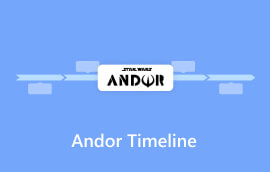Let’s Go Back in Time and View Perfect Timeline of The Roman Empire
Are you a history lover? Then, maybe you have an idea about the Roman Empire. If so, we can give you more insights you can discover through viewing its timeline. Well, the post you are about to read will give you a deeper understanding of the major events that happened during that time. Also, since we are discussing its timeline, we will provide an excellent visual representation that may help you understand more information. Plus, we can offer a perfect tool if you wonder what software to use when making a timeline. With that, come here, and let us have a wonderful journey in learning about the Roman Empire timeline.

- Part 1. Roman Empire Timeline
- Part 2. Detailed Roman Empire Timeline
- Part 3. Best Timeline Creator for the Roman Empire
- Part 4. FAQs about the Roman Empire Timeline
Part 1. Roman Empire Timeline
Learning more about the Roman Empire is important, especially if you want to know its history. In that case, we will offer you the best Roman Empire timeline. This way, you can know about past events that have a good impact. So, come here and learn more. But before that, let us give you detailed information about the Roman Empire's history.
Rome ruled the Mediterranean region for the majority of the entire empire. Huge portions of northern Africa and the majority of Western Europe. The Romans excelled in the practical law arts and had a great army. Statecraft, city planning, and government are all included. Additionally, they recognized and incorporated the contributions of other prehistoric peoples. Those of the Greeks, whose culture was maintained as a result. The Roman Empire was notable for more than its superior armies. It has made progress in academic pursuits. Roman law, for instance, was a good and intricate body of case law and commentary. The sixth century saw the codification of everything. The roads of Rome were unrivaled in the ancient world.
See the Roman Empire timeline below to know more about the major events that happened in the Roman Empire. Then, you will get a detailed timeline explanation in the succeeding parts. This way, you will be well informed about everything regarding the discussion.

Get a detailed timeline of the Roman Empire.
Part 2. Detailed Roman Empire Timeline
Rome was founded (625 BC)
Age of The Roman Emperors / Period of Kings (325-510 BC)
If you want to know the seven Roman Kings of that time, see the information below.
Romulus
◆ He founded the Senate, the army, and the Curiate. These are the three institutions for older people. Additionally, he separated the populace into patricians and plebeians. Romulus co-ruled with Titus Thaci until their deaths after the Sabines were united. He was one of the best Kings because he commanded successful wars.
Sabines Numa Pompilius
◆ He is a peaceful king. He’s the one who established clerical courses.
Tullus Hostilius
◆ King Tullus Hostilius joined Alba Longa.
Ancus Marcius
◆ He is the king who defeated Latin. He also commanded his forces to build a bridge over the Tiber River. Aside from that, he founded Ostia.
Tarquinius
◆ He is also the Elder from Etruria. He also laid the foundation of the temple of Capitoline. King Tarquinius began a war against the Etruscans and Latin.
Servius Tullius
◆ King Servius brought the reform of citizenship. He also had military success over Veii and created Diana’s temple.
Tarquinius Superbus
◆ He is the son-in-law of Servius Tullius. However, he is the king who was exiled and fell on the monarchy.
Republican Rome Period (510-31 BC)
The Roman Republic era is the second time in Roman history. The word republic refers to both the time and the political structure. Depending on the scholar, its dates are the four and a half centuries between 509 and 49, 509 and 43, or 509 and 27 BCE. Even though the Republic's existence dates back to the legendary era, problems arise. It is because of the Republic's official end date. In public, it was divided into three periods. The first period is when Rome expanded to the beginning of the Punic Wars in 261 BCE. The second period is from the Punic Wars to the Gracchi and Civil War. It happened when Rome came to conquer the Mediterranean (134). The third and last period is from Gracchi until the fall of the Republic in 30 BCE. Rome chose its governors using a republican system. They can avoid power misuse in this way. The Romans permitted the comitia centuriata to choose two important leaders. It is referred to as consuls, whose one-year terms in office were restricted. There have been one-person dictatorships at times of national unrest.
Imperial Rome and The Roman Empire (31 BC-AD 476)
Republican Rome ended in this period, and Imperial Rome began. Along with it, Byzantium was ruled by the Roman court when Rome fell. But it is usual to separate the roughly 500-year span of the Roman Empire into an earlier era. The Princperiode time in question, while the Dominate was a later one. The prevalence of Christianity marks the latter period. The term “tetrarchy” refers to the division of the empire into a four-person administration. There was an effort to maintain the Republic's existence during the earlier era. The Roman Empire was split into two empires. It is the Western and Eastern empires in AD 286. Each empire has its own ruler that governs it. In AD 455, the Western Empire suffered in a Gothic invasion and was sacked by the Vandals. On the other hand, the Eastern Empire, known as the Byzantine Empire, survived until the 15th century.
Byzantine Empire (AD 476)
It is believed that Rome fell in AD. 476, but this is oversimplifying. You might say that it persisted till AD. 1453. It was when the Ottoman Turks subdued the Eastern Roman or Byzantine Empire. In 330, Constantine designated Constantinople's Greek-speaking region as the Roman Empire's new capital. Odoacer did not wipe down the Roman Empire in the East when he conquered Rome in 476. The Byzantine Empire is another name for the Eastern Empire. Greek or Latin may be spoken there by the locals. They belonged to the Roman Empire as citizens.
Part 3. Best Timeline Creator for the Roman Empire
After viewing the Roman Empire timeline, you may have to think about how to make one. Luckily, you can discover that in this section. The best software that can help you create a timeline is MindOnMap. It is an online-based tool you can access on all browsers. It is capable of creating a timeline with its flowchart function. Also, it can provide many elements and functions. These are shapes, text, fill colors, functions, themes, and lines.
Additionally, it has an auto-saving feature, making it more helpful for all users. The feature can help you prevent experiencing information loss during the creation process. So, if you prefer creating a colorful and perfect timeline of the Roman Empire, use MindOnMap.

Further Reading
Part 4. FAQs about the Roman Empire Timeline
When did the Roman Empire fall?
The fall of the Roman Empire took place in 476. It is when Odoacer, a German chieftain, deposed Romulus Augustulus, the last Roman Emperor.
How long did the Roman Empire last?
The Roman Empire lasted for almost 1,500 years. The City fell in 1453, which ended the reign of the Roman Empire.
Who was the first Roman Empire?
Caesar Augustus was the founder and the first Roman Emperor from 27 BC until his passing in 14 AD.
Conclusion
It’s helpful to view a complete Roman Empire timeline, right? So, if you love history and want to study more about the Roman Empire, check and return to this guidepost. You’ll discover every detail you need about the topic. Also, try to use MindOnMap to create a great timeline for an excellent visual representation.










